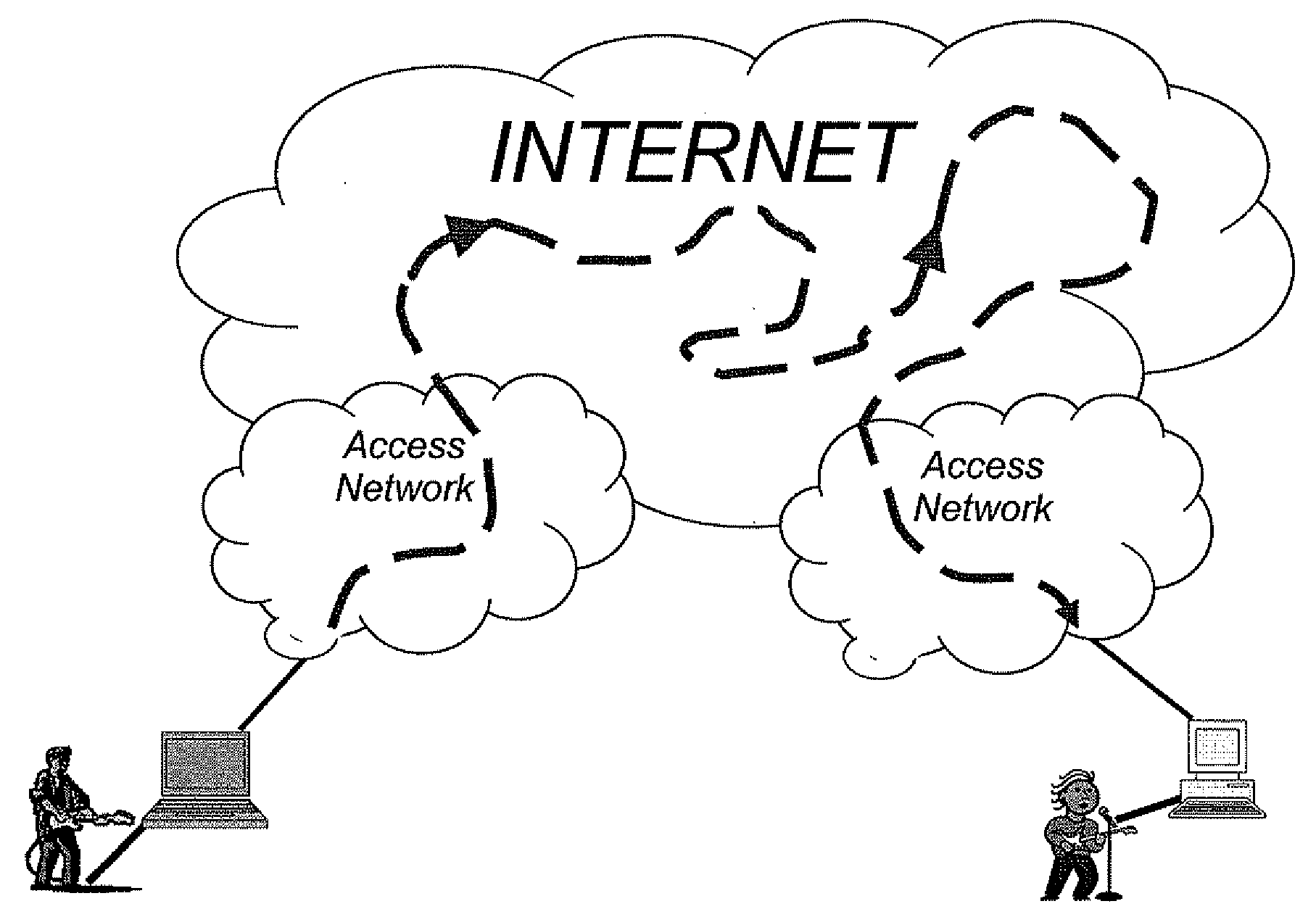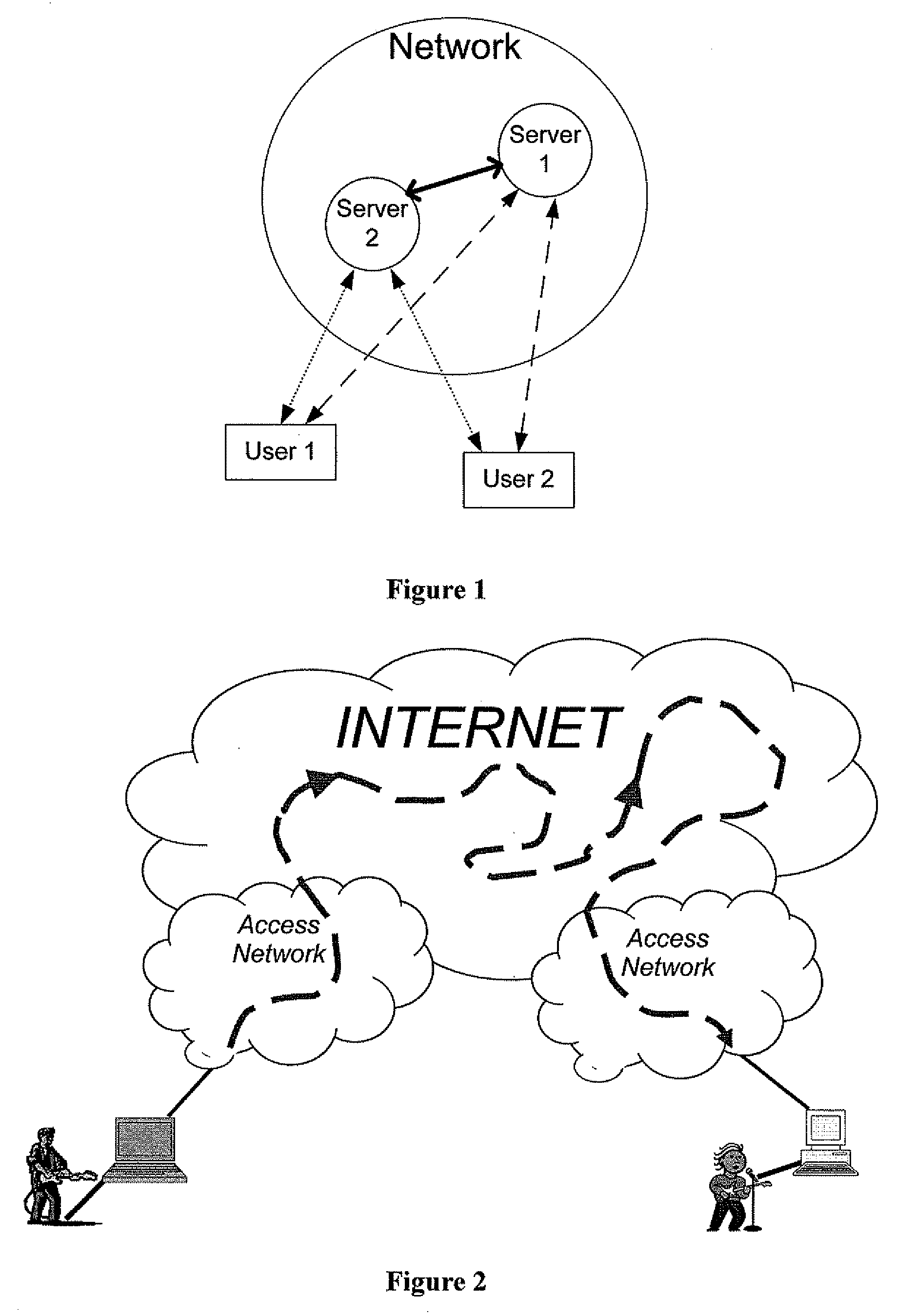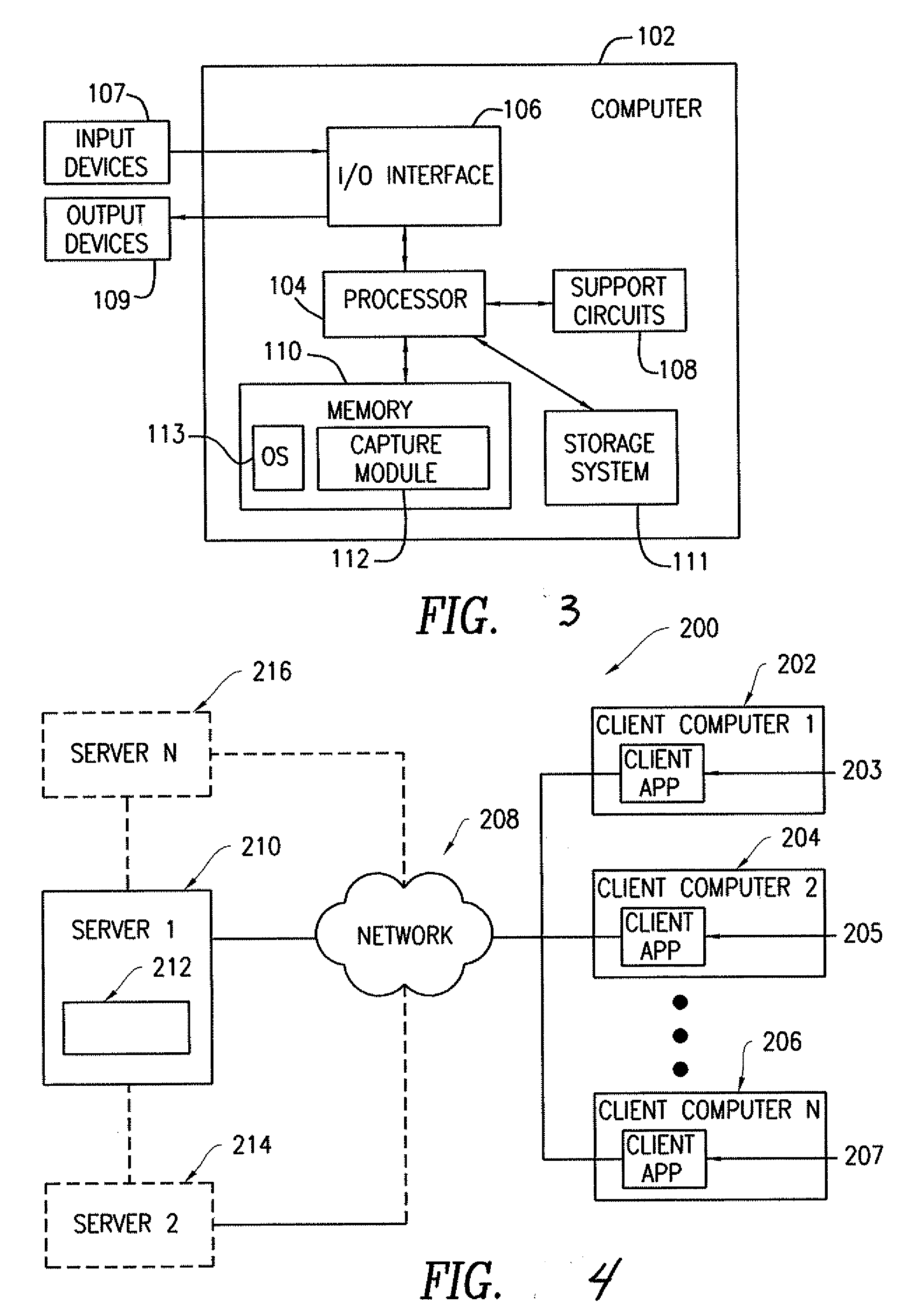Network architecture for multi-user collaboration and data-stream mixing and method thereof
a multi-user collaboration and data-stream mixing technology, applied in the field of network architecture, can solve the problems of inability to meet the needs of multi-user collaboration, inability to provide delay-sensitive applications, and high delay and variability of would-be providers, and achieve the effect of enhancing real-time or near-real-time audio collaboration and reducing cos
- Summary
- Abstract
- Description
- Claims
- Application Information
AI Technical Summary
Benefits of technology
Problems solved by technology
Method used
Image
Examples
Embodiment Construction
[0026]Embodiments of the present invention are generally related to network architecture. More specifically, embodiments of the present invention relate to network architecture for multi-user collaboration and data-stream mixing and a method thereof method.
[0027]Embodiments of the present invention are generally related to a method and apparatus for mixing a data signal. More specifically, embodiments of the present invention relate to a method and apparatus for mixing a data signal in a frequency domain so as to realize computational efficiency and reduced latency.
[0028]FIG. 3 depicts a block diagram of a general computer system in accordance with one embodiment of the present invention. The computer system 100 generally comprises a computer 102. The computer 102 illustratively comprises a processor 104, a memory 110, various support circuits 108, an I / O interface 106, and a storage system 111. The processor 104 may include one or more microprocessors. The support circuits 108 for ...
PUM
 Login to View More
Login to View More Abstract
Description
Claims
Application Information
 Login to View More
Login to View More - R&D
- Intellectual Property
- Life Sciences
- Materials
- Tech Scout
- Unparalleled Data Quality
- Higher Quality Content
- 60% Fewer Hallucinations
Browse by: Latest US Patents, China's latest patents, Technical Efficacy Thesaurus, Application Domain, Technology Topic, Popular Technical Reports.
© 2025 PatSnap. All rights reserved.Legal|Privacy policy|Modern Slavery Act Transparency Statement|Sitemap|About US| Contact US: help@patsnap.com



